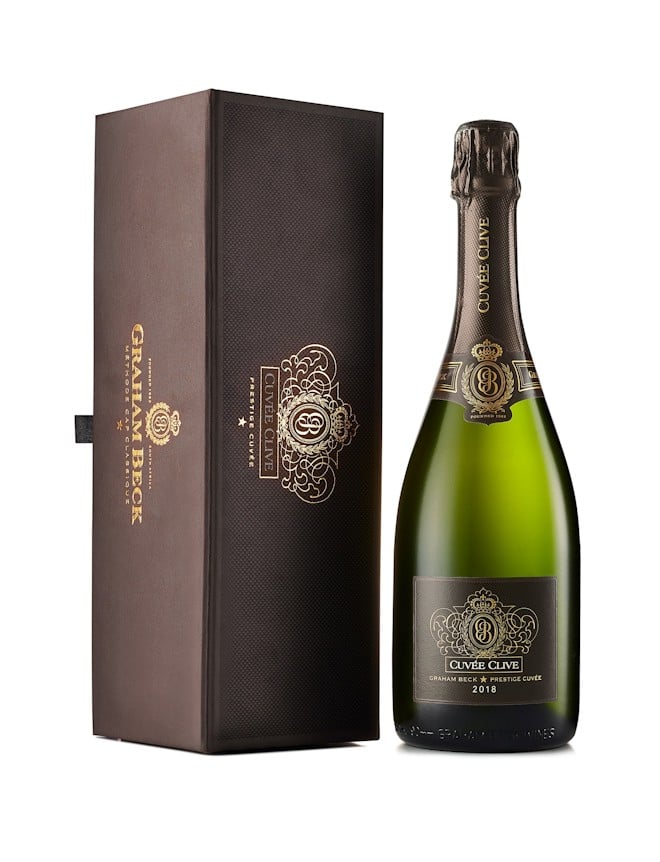Graham Beck Cuvee Clive 2019
£45.95 incl. VAT
1 in stock
Tim Atkin MW’s 2025 South Africa Special Report has once again brought historic recognition to the House of Graham Beck. The Cuvée Clive 2019 has been named Sparkling Wine of the Year with 97 points – its seventh triumph in this category.
Graham Beck Cuvee Clive 2019 in the glass this Cap Classique looks youthful and exuberant, with a brilliant, bright and almost luminescent yellow hue and a slight tinge of green on the meniscus in the glass. A constant string of tiny bubbles rise to the surface, forming a gentle yet persistent mouse. On the nose aromas of white peach, fresh pears, granny smith apples and lemon zest abound, with undertones of roasted nuts, brioche and hints of spice developing as the wine opens up in the glass. The palate is crisp and vibrant, with distinct flavours of grapefruit, lemon, peach and apple amalgamating on the mid-palate, while pin-prick sized bubbles gently roll over the tongue and the fresh acidity leads to mouth-watering, juicy finish which lingers long after each sip.
Graham Beck’s most prestigious and exclusive Cap Classique, the Cuvée Clive represents the very pinnacle of our craft and bears testimony to our reputation as a specialist premium sparkling wine producer. It is the ultimate expression of our dedication to creating Méthode Champenoise style wines of distinction, complexity and world-class excellence. This extraordinary cuvée embodies the Graham Beck pursuit of the perfect bubble and is a celebrated culmination of meticulous planning and enduring passion.
VINEYARD: The grapes for this prestige cuvee Cap Classique were selected from 3 special parcels on our property in Robertson, all grown on limestone rich soils, and a single block of Pinot Noir from Durbanville, planted on table mountain sandstone. The clonal selection for the Chardonnay consisted of CY277 and CY548, while the Pinot Noir is PN777.
HARVEST DETAILS: All grapes were hand-picked and whole-bunch pressed separately, with only the cuvee fraction of the juice (first 400L/ton extracted) utilised for the blend. The Chardonnay’s were harvested on 12 and 15 January, while the Pinot Noir was picked on 5 February. 50% of the blend (only Chardonnay portions) underwent the primary fermentation in neutral French oak barrels and Austrian foudres, while the rest of the wine was fermented in stainless steel tanks. After 4 months of ageing on the primary lees in the fermentation vessels, the components were blended together, stabilised and bottled on 28 May 2019. The wine rested on the lees in the bottle for 5 years and 7 months before the first disgorging and release.
CELLAR TREATMENT: Upon arrival at the cellar, each parcel was gently whole-bunch pressed, extracting only the first 400L/ton – known as the cuvée fraction – for the purpose of this blend. Two of the Chardonnay portions underwent barrel fermentation in a combination of old Piece Champenoise (205L) barrels and Foudres (2000L), constituting 70% of the final blend. The third portion is fermented in stainless steel tanks. The Pinot Noir is entirely fermented in stainless steel. After ageing on the primary lees in their respective vessels for 5 months, the components were blended and bottled on 11th June 2018 for secondary fermentation in the bottle. The wine matured on the lees for 5 years before disgorgement.



